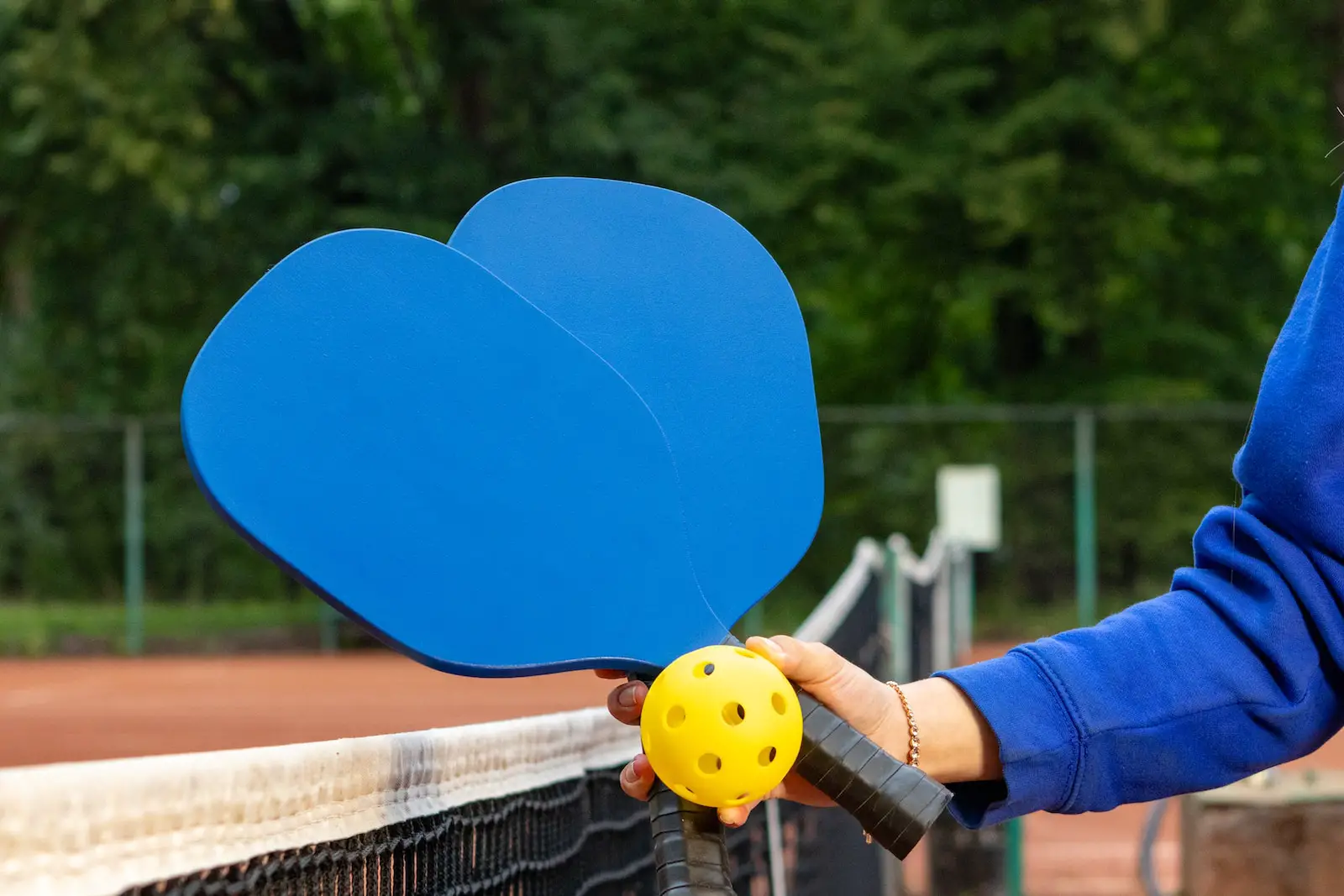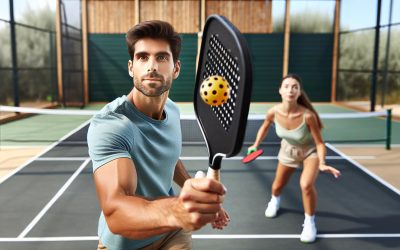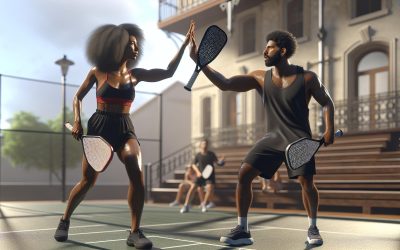If you’re a pickleball enthusiast like me, you’re always on the lookout for strategies to amp up your game. One such strategy I’ve found incredibly useful is “stacking”. This might sound like jargon to the uninitiated, but don’t worry, I’m here to demystify it.
Stacking in pickleball is a tactical move, a secret weapon if you will, that can give you an edge over your opponents. It’s about positioning and maximizing the strengths of your team. Intrigued yet? I bet you are!
So, whether you’re a seasoned player or a newbie to the sport, understanding and mastering stacking can drastically improve your pickleball game. Let’s delve into the world of stacking, shall we?
What is Stacking in Pickleball?
Stacking is a strategy in pickleball that’s often seen in high-level matches. It’s a crucial part of shaping a game to fit your team’s strengths, and ultimately, swaying the results of the game in your favor.
So, what is stacking in pickleball and how does it work? Stacking is where players methodically arrange themselves on the court to optimize the use of their strengths. In simpler terms, it’s positioning the stronger player to take more shots.
How does this look in practice? Consider a doubles team, where one player is more skilled or stronger than the other. The team may position the stronger player to cover more of the court, allowing them to field more shots. This way, they’re making the most out of their collective skill set.
This isn’t a move for the faint-hearted though. Stacking requires solid communication, sharp court awareness, and exceptional shot-making ability. But when executed well, it can lead to significant shifts in the game, often favoring the team using this strategy.
Let’s be clear – stacking is not about underestimating the ability of the weaker player. It’s about optimizing the team’s strengths and creating opportunities for success. After all, pickleball is a game of strategy and every player has a part to play.
Mastering stacking in pickleball can definitely be a game-changer. It’s worth noting, however, that the right time to stack depends on various factors. These can include player skills, game pacing, and the opponents’ gameplay. Therefore, careful observation and shrewd decisions are paramount to effectively utilize stacking.
Stacking in pickleball isn’t some newfound trick. It’s been around for as long as the game itself, being an inherent strategy in doubles play in other racket sports too. So next time you’re on the court, consider if stacking might just be the edge your team needs.
The Benefits of Stacking
There’s a reason why stacking in pickleball is popular amongst seasoned players. It’s a strategy that, when properly utilized, can pay off big time. Let’s delve into what make this tactic so powerful.
First and foremost, stacking makes sure that the stronger player is always in the middle of the action. With a barrage of shots coming their way, this allows the stronger player to anchor the team’s position and drive the game. Pretty smart approach, wouldn’t you agree?
Moreover, with good communication and court awareness, stacking can inject a level of unpredictability into your team’s play. This makes it considerably harder for the opposition to predict your next move. Stacking isn’t just an on-court shuffle—it’s a psychological tactic that can drop your enemies’ guard and give you that necessary edge.
Be that as it may, stacking is a delicate art in pickleball—it’s not about snubbing the weaker player. If anything, it empowers the ‘weaker’ partner by enabling them to leverage their strengths and learn from the more experienced player’s gameplay.
Consequently, stacking benefits both players in the duo, boosts team chemistry, and can significantly mold the trajectory of the match. It magnifies the team’s collective skill set, ensuring each player’s strengths are well-utilized and made the most of.
Let’s summarize the key benefits of stacking:
- Optimized player strengths
- Enhances unpredictability
- Empowers the weaker player
- Boosts team chemistry
So, if you’re serious about improving your pickleball game, don’t push stacking aside. Instead, embrace it as a powerful tool to use to your advantage. Just remember—good communication is key to unlocking its potential.
Stay tuned to learn how you can start implementing stacking in your team’s strategy. Trust me, you won’t regret diving into the fascinating world of strategic pickleball play.
How Does Stacking Work?
So how does stacking work in pickleball, you might ask? The process is not overly complicated. Contrary, it’s a strategic game plan that relies heavily on communication and understanding between team members.
At the start of a point, players take their positions, with the stronger player typically positioned to the right or left. But here’s the twist: when the ball is served, the position may not match the players’ strengths. This mismatch opens the gate for the “stacking” strategy to come into play.
In the heart of stacking lies a trick. The goal is to place the stronger player in a position to handle the majority of shots. To achieve this, as soon as the ball is served, players switch places, or ‘stack’, if you will. This bluff makes it difficult for opponents to predict which player will take the next shot.
Players must be deft on their feet, with an acute sense of anticipation to shift positions smoothly without disturbing the flow of the game. Impressive, isn’t it? You’re essentially playing a game within the game, adding a layer of unpredictability that can tip the match in your favor.
Bear in mind, though, that stacking isn’t about belittling the weaker player’s skills or potential. Instead, it’s about ensuring that the team can make the most of their collective talent. The prevalence of stacking among professional pickleball players is proof of its effectiveness, and it’s a strategy that even amateur players can benefit from.
The key to unlocking stacking’s potential lies in practicing good communication. Team members must understand each other’s strengths, weaknesses, and playing styles, all while maintaining excellent communication throughout the game. And that’s the essence of stacking in pickleball. It requires effort and a methodical approach, but when executed well, the results can be fascinating— and totally game-changing.
Stacking Strategies for Doubles Play
Proper communication between team members ensures that there’s no confusion during play. Call out shots, discuss strategies, and make sure you’re keeping an honest and open dialogue throughout the game.
Court awareness, another significant aspect, needs proper honing. Keeping track of the ball, identifying openings, and understanding the movement patterns of the opposing team contribute to effective stacking.
Finally, make sure different game plans stored up your sleeve! While stacking is a go-to strategy for many, it’s important to adapt as the game progresses. Remember, your opponents are likely observing your plays and strategizing to counteract the move. So, keep your strategies flexible and switch them according to the game flow.
To sum, stacking is about making the most of each teammate’s strengths. While it requires good communication, court awareness and quick adaptability, effective stacking can lead to increased unpredictability and chances of success.
Challenges and Considerations in Stacking
Now let’s dive in deeper as we uncover some challenges and key considerations in stacking. Yes, it’s a vital strategy. But, just like any other tactic, stacking isn’t a one-size-fits-all approach. It’s not a technique you can jump in and execute flawlessly without proper planning.
Firstly, understanding your partner’s skill level is vital. If the difference in skill level is extreme, stacking might end up doing more harm than good. Stacking isn’t about over-reliance on the stronger partner. Hence, the complementary player should be competent enough to keep the game going and handle shots if the situation arises.
Next, remember to monitor your court position constantly. When engaged in continuous offensive and defensive plays, there’s a tendency for players to lose track of their stacking plan. They often mistakenly switch sides or end up on an unintended part of the court. This can break the rhythm and possibly give the opponents a chance to score.
Another crucial aspect is effective communication. Without it, stacking can lead into chaos. Both players need to understand when and why they should stack and must be able to quickly react to changing match dynamics.
Lastly, adapting is key. The best laid plans may need to be adjusted on the fly. You might find your stack being exploited by the opponents, or perhaps your partner’s not in their best form. In such cases, sticking rigidly to the plan could potentially jeopardize the game.
As you adopt the stacking strategy, keep these points in mind:
- Understanding your partner’s skill level
- Constantly monitoring your court position
- Effective communication between partners
- Willingness to adapt to changing circumstances
Overall, with proper understanding of these challenges and considerations, you’ll be better equipped to implement stacking effectively in pickleball. Only remember, it’s not about perfect execution every time; but rather adopting a strategic approach that maximizes your team’s chances of success.
Conclusion
Stacking in pickleball isn’t just about placing the stronger player in a dominant position. It’s a strategic move that demands understanding your partner’s skills, keeping an eye on court positioning, maintaining effective communication, and a readiness to adapt. It’s a technique that can truly transform your game if used correctly. Remember, it’s not just about winning, it’s about optimizing your team’s strengths to play the best game possible. So don’t shy away from stacking. Embrace it, master the challenges and watch your pickleball game reach new heights.














0 Comments